- Home
- Peter Ackroyd
Foundation Page 16
Foundation Read online
Page 16
The character of Thomas Becket has always been the subject of controversy. His reputation as saint and martyr has, as it were, preceded him. He was a man always willing to play the part. Like a later English saint and martyr, Thomas More, he was always on stage. He took off the twenty-four changes of silk robes, and put on a shirt of sackcloth filled with lice. He lived on bread and water muddied with dirt. In that respect, opposites yoked violently together within one man, he was profoundly medieval. He was also proud, and stubborn, and excessively self-righteous.
As soon as he became archbishop, in 1162, he confronted the king. He refused to allow the sheriffs of Canterbury to send money to the royal treasury; then he challenged the king’s decision that churchmen, found guilty in the clerical courts, should be handed over to the secular authorities for punishment. ‘You do not’, he said, ‘have the power to command bishops.’ But that was precisely what the king wished to do. He was resolved to restore royal authority over the English Church in the style of the Norman kings. They had withstood papal intervention in the affairs of England, and a papal legate could only enter the country at the king’s invitation. The behaviour of Becket, as the agent of the see of Peter, incensed him. Henry did not contest the sacred authority of the Church, but he was determined that it would not encroach upon the rights and duties of the throne.
His anger, once roused, was formidable. Anger was a speciality of the Angevin dynasty, a black and ferocious force that could destroy anything in its path. One courtier recorded an incident when ‘the king, flying into his usual temper, flung his cap from his head, pulled off his belt, threw off his cloak and clothes, grabbed the silken coverlet off the couch, and sitting as it might be on some dungheap started chewing pieces of straw’. This was the man who became the mortal enemy of Thomas Becket. The king was determined to ruin him.
At the beginning of 1164 the king and his advisers drew up a statement of sixteen clauses, known as the Constitutions of Clarendon, in which royal power was asserted against the interests and demands of the pope. Becket first agreed to the proposals, thus seeming ‘to perjure myself’, but then retracted his consent; he refused to sign the document. In the autumn of this year the king called a council at Northampton, with the bishops and great lords of the realm in attendance. Becket was now charged with contempt of court and fined, but the king had prepared further measures. Becket was ordered to account for all the revenue that had passed through his hands as chancellor as well as other sums of money for which he was deemed to be responsible. Henry allowed him no room for manoeuvre. Becket then made an entrance. He rode into the courtyard of the council chamber at Northampton, wearing his robes of office and bearing a large cross in his hands.
The story has become well known, and may have been elaborated in the telling. Some of the bishops came up to him as he dismounted from his horse, and tried to take the cross from him. ‘If the king were to brandish his sword,’ one of them said, ‘as you now brandish the cross, what hope can there be of making peace between you?’ ‘I know what I am doing,’ Becket replied. ‘I bear it for the protection of the peace of God upon my person and the English Church.’ Then he walked into the chamber, where he forbade the bishops to deliver any judgment against him. The king asked the lords alone to pronounce sentence against the archbishop. Becket refused to listen. ‘Such as I am,’ he told them, ‘I am your father, while you are magnates of the household, lay powers, secular persons. I will not hear your judgment.’ He swept out of the chamber, cross in hand, with loud cries of ‘Traitor!’ following him. Soon after, he fled the country in disguise.
He made his way to Sens, where Pope Alexander III held his court in exile, and flung himself at the feet of the pontiff. In the course of a long address, in which he denounced the arrogance and impiety of the king in attempting to destroy the powers of the Church, he adverted to his own role as archbishop. ‘Though I accepted this burden unwillingly nevertheless it was human will and not divine will that induced me to do so.’ He was blaming Henry. ‘What wonder, then, it has brought me into such straits?’ Weeping, he took the ring of office from his finger. ‘I resign into your hands, Father, the archbishopric of Canterbury.’ Some of the cardinals present hoped that the pope would put the ring in his pocket; they did not want to be at odds with the king of England. But Alexander III returned the ring. ‘Receive anew at our hands,’ he told Becket, ‘the cure of the episcopal office.’
Henry, cheated of his prey, reacted with predictable fury. Unable to touch Becket, he reached for his men in Canterbury. Their lands were seized and their relatives were laid ‘under safe pledges’; they were evicted from their houses and made hostage to the royal will. The first act of the drama was over.
Henry II did not speak English, employing only French or Latin. That is perhaps appropriate for a sovereign who spent only one third of his reign in England; the rest of the time was passed in Normandy or in other parts of France. He was born at Le Mans and died at Chinon; both towns were part of his original patrimony, and he was most deeply attached to the land of his father. He wore the short coat of Anjou rather than the long robe of Normandy. The Angevin Empire was in essence a private fief. Henry had no ‘foreign policy’ except the pursuit of his own interest and advantage. In this he was not unlike every other sovereign of the period.
It is a tribute to the skills of his administrators that England remained without turbulence in the long periods of his absence in France; it is yet another manifestation of the deep strength of the governance of the country. The key lay in efficient management or, rather, in efficient exploitation. Various taxes and impositions were variously raised; but these scutages and tallages and carucages are now the domain of the lexicographer rather than the economist. It is sufficient to say that the king’s power was not in doubt. In 1170 he dismissed all of the twenty-three sheriffs of the kingdom, made them submit to an inquest, and reappointed only six of them. That could not have happened in the reign of Stephen.
In fact the prosperity of the country, insofar as it can be estimated, increased during Henry’s reign. By the end of the twelfth century 150 fairs, as well as 350 markets, took place throughout the country. The first windmill was constructed in Yorkshire in 1185. The first church spires, now so familiar a feature of the English landscape, were rising in the limestone belt of Northamptonshire and Lincolnshire. The use of horses, rather than oxen, quickened the pace of agricultural activity. English wool and tin were much in demand.
The English village was also thriving. It was, as we have seen, a very ancient construct, but it was also susceptible to change. By the eleventh century the essential structure was that of church and manor house, with a row of small dwellings for the dependent population who worked on the manor farm in exchange for land of their own. Around the village lay the open fields. In the twelfth century, however, new villages were planned and laid out by the lords of great estates. New labour was introduced onto the land; markets and trading areas were created. The houses of the labourers were often planned around a small rectangular green, where livestock might graze; each dwelling had its own garden.
The records of the manorial courts of the twelfth century are filled with the daily life of the village. A shoemaker, Philip Noseles, is arrested because of his persistent habit of eavesdropping on the conversations of neighbours; a woman named Matilda is taken to court for breaking down hedges; Andrew Noteman dragged the daughter of Roger the thatcher out of her cottage by her ears; Matilda Crane has the habit of stealing chickens and is to be barred from the village; a couple accused of fornication were told that they must marry if they repeated the offence.
The origins of many villages lie in prehistory, and their life was deeply imbued with custom and the tenacious observance of tradition. In one document a young man is described as being ‘of the blood of the village’, emphasizing the presence of distinct kinship ties. Collective rituals also persisted for many hundreds, if not thousands, of years. Until quite recent times, in the village of Po
lperro in Cornwall, it was customary to wheel a ‘mock mayor’ down to the sea and there dip him into the water. At the village of Holne, in Devonshire, a ram was tied to a great stone pillar in the middle of a field where its throat was cut by a band of young men.
The villagers sowed wheat and rye, barley and oats; they reared horses and pigs and cattle; they brewed ale. Some of the freeholders fell into debt, and were forced to sell land; some of them exchanged lands. Village officials were elected every year, either by the lord or the villagers themselves, to take care of such duties as the collection of fines. A common shepherd was employed for the flocks of all the families. It was a stratified but highly cohesive society that depended upon communal agreement in all the principal areas of agricultural life. It was also a society partly established upon mutual help. Yet how much of the material wealth of the nation reached the lowest classes of farmers and labourers cannot be known. History has always ignored the poor.
The number of new towns was growing very rapidly, in the same period, as the economic life of the country quickened; in the forty years between 1191 and 1230 some forty-nine new towns were planted. These were generally planned by a great lord who wished to create a market for the surrounding countryside. He then collected rents and taxes, making money far in excess of the amount to be gained from land devoted to agriculture. The bishop of Lincoln, for example, laid out a street of shops and houses beside a small village; he then diverted the principal road towards it. So was created the market town of Thame in Oxfordshire. Leeds was conjured into being in 1207 when the lord of the manor of Leeds, comprising a small village, planned thirty building plots on either side of a new street just beside a crossing of the river Aire. These were profitable investments, and a measure of their success can be found in the fact that after 900 years they still flourish. Somewhere beneath the modern foundations lie the bake-houses, the latrines, the taverns and the prisons of the early thirteenth century.
Many of these new towns were built by the command or recommendation of the king, and were known as royal boroughs. The same imperative of profit applied. Thus in 1155 the king decreed that at Scarborough ‘they shall pay me yearly for each house whose gable is turned towards the street fourpence, and for those houses whose sides are turned towards the street, sixpence’.
The older towns, with their foundations in the first century and perhaps even before, continued to expand. They were becoming more self-aware. Their walls were strengthened and dignified; Hull, for example, built the first surrounding wall made entirely out of brick. The association of the leading townspeople, with the mayor as their chief officer, became known as communia or communa. In 1191 the system of mayor and aldermen was established in London. The leaders of the towns began to resent external interference; the aldermen of London, for example, were quite capable of defying the royal court at Westminster.
The leaders of the towns built walls and gates, with main streets leading directly to the market area. The same trades, such as shoemaking and bread-baking, had a tendency to congregate together. Certain towns were already identified by their principal commodity, so that we hear of the russet cloths of Colchester and the soap of Coventry. The Knights Templar established a town in Buckinghamshire which they named as Baghdad, hoping to create in imitation a great market there; it is now known more prosaically as Baldock. ‘Fairs’ were instituted at Boston and Bishop’s Lynn, Winchester and St Ives. In the larger towns, an entire street might be devoted to a single trade. The population was growing along with everything else. By the late twelfth century London numbered 80,000, while Norwich and Coventry each harboured 20,000 inhabitants.
The original outline of Stratford-upon-Avon, planned by the bishop of Worcester in 1196, is still visible in the modern streets; houses still stand on the plots where they were sited by the bishop; many of the names of the streets have also survived. A female huckster of the thirteenth century would still be able to navigate the roads of the town. Even a great city such as London still bears the traces of its origin.
The traders of these towns, old or new, helped to develop guilds that enforced standards; these guilds merchant, as they were called, prospered to such an extent that eventually they took over the administration of most of the towns. The guilds had a long existence, dating back to the ninth and tenth centuries, but in their original incarnation they were ‘friendly societies’ of a pious nature; they prayed for the souls of their dead brethren, and supported their members in case of dire need.
Members of the same trade naturally tended to join the same guild; so economic, as well as spiritual, interests played a part. They became organized. They laid down standards of business and manufacture. They refused to allow outsiders to participate in their ‘mysteries’ and instead set up a rigid system of apprenticeship. They had once met in the churchyard or in the town hall, but by the end of the twelfth century many of them had acquired imposing premises of their own commonly known as the guildhall.
Yet they retained their pious endeavours, collecting for charity and for the expenses of death; many of them maintained a chapel, or at least an altar light, at their nearest church. They built bridges and roads, although the improvement of transport was perhaps a matter of self-interest. The craft guilds were also responsible for the sequences known as miracle or mystery plays that were the most important aspect of English drama in the age before Shakespeare. This concatenation of religious, social and economic power is thoroughly medieval.
So the long period in which towns prospered, in the twelfth and thirteenth centuries, was also one in which the sense of urban community was most highly developed. In some respects the notion of a community is specious, however, since the richer townspeople known as ‘the better sort’ created an oligarchy of power concentrated in a small network of families. In Norwich 60 per cent of the wealth had devolved into the hands of 6 per cent of the population. These were the men who would serve as jurors in the town court and who took up the offices of the local administration. Nevertheless a feeling of common interest was aroused in the maintenance of newly acquired privileges and traditions. In the Commune of London, forged at a time when mutual antagonism between merchants and craftsmen was intense, the voices of the citizens could still be heard shouting ‘Ya Ya!’ or ‘Nay Nay!’ in their assemblies.
This sense of corporate identity was strengthened by the belief that towns were areas of relative freedom. The people who gathered there were drawn together in a commercial pact, and were not subject to the rules of labour service that obtained in the countryside. By the early twelfth century it was established that if a villein resided in a town for a year and a day, he acquired his freedom. The air of the town was different.
We may envisage wooden houses and wooden shops, with vacant plots between them where the hens scratched and where the small horses of the period were tethered. Many of the wooden houses were of two storeys, with the shop on the ground floor and the living quarters above it. Permanent shops were erected, but stalls could be set up and taken down from day to day. In any town perhaps two or three stone houses were owned by the richer merchants.
In Chester a wooden footway was raised above the street of beaten earth so that it became a ‘first floor’ sheltered by the houses above; from there, the pedestrians could ‘window-shop’. In the towns of England dirt and refuse were scattered everywhere, partly scavenged by pigs and kites. The streams running above ground were often filthy with industrial waste and excrement. The noise of bargaining, and of argument, was intense. It was busy, always busy, with the particular stridency and excitability of the medieval period in England.
How much the king’s advisers revised the administration of justice, and how much was Henry II’s own contribution, is a nice question. It is reported that he spent many sleepless nights debating with his advisers over points of law, but that may be a pious fiction. It is undoubtedly true that in the course of his reign the rule of law was amplified in England; one of his contemporaries, Walter Map, noted
that the king was ‘a subtle deviser of novel judicial processes’. He decreed, for example, that royal justices should make regular visits to the shires and take over legal business previously reserved for the sheriff or the county justice. Six groups of three judges each toured between four and eight counties so that the whole country came under their purview. They were based at Westminster, but the central administration was reaching out.
Their activities were of course designed principally for the king’s own profit, as he gathered up fines and other payments; it was well known that the royal courts loved money more than justice, and the king expected ‘presents’ at every stage of the judicial proceedings. A wealthy man, accused of a crime, would offer a large sum ‘for having the king’s love’. In a rough and violent society, it was considered to be perfectly natural. You paid money to see a doctor. You paid money to see a judge. Law was another form of power. It was just becoming swifter and more efficient.
But acts of expediency sometimes have unintended consequences. The imposition of uniform royal justice over the country laid the conditions for the development of common law. National law took precedence over local custom. When law became uniform, it could indeed eventually become ‘common’ to all. Phrases were employed that emphasized this theory of ius commune; ‘as the custom is in England’ or ‘according to the custom of the land’ became standard formulas. Men could reduce it to order, and to the claims of precedent; it could be codified and standardized. One of the most important legal works in English history, Ranulph de Glanville’s On the Laws and Customs of England, was composed in the reign of Henry II. It is no accident that ‘legal memory’ was deemed to have begun at the time of the accession of Richard I, the king’s oldest surviving son, in 1189. Henry was acting out of self-interest but his measures, more than any other, promoted obedience to the law and assured the coherent administration of justice. He had no interest in reform, and no scheme for it. He acted out of private and selfish interests only, and was motivated solely by the force of circumstances. He did not have any idea where his actions might lead, except to the extent that they afforded him more and more money. These are the foundations of the mighty edifice of English law. Henry had stumbled upon a system that has endured ever since.

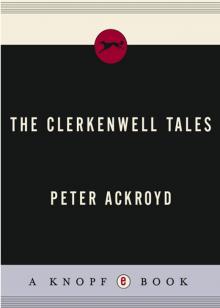 The Clerkenwell Tales
The Clerkenwell Tales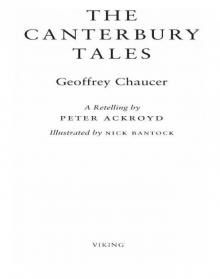 The Canterbury Tales
The Canterbury Tales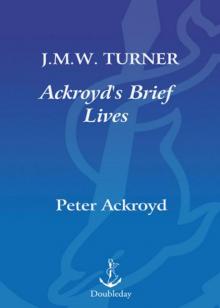 J. M. W. Turner
J. M. W. Turner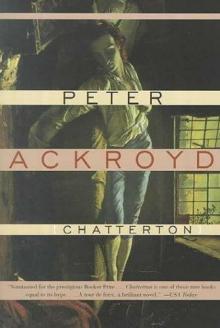 Chatterton
Chatterton The Canterbury Tales – A Retelling
The Canterbury Tales – A Retelling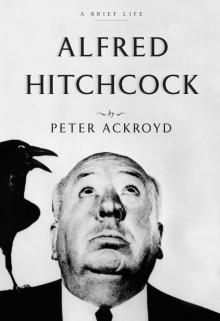 Alfred Hitchcock
Alfred Hitchcock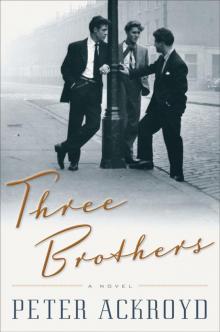 Three Brothers
Three Brothers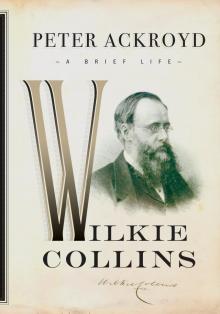 Wilkie Collins
Wilkie Collins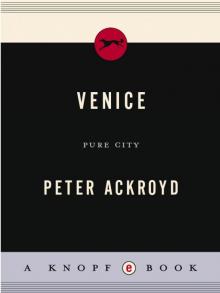 Venice
Venice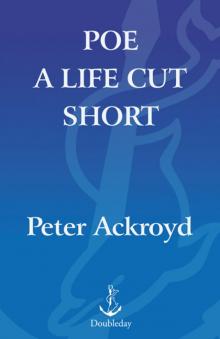 Poe
Poe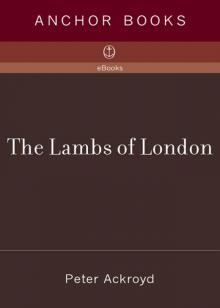 The Lambs of London
The Lambs of London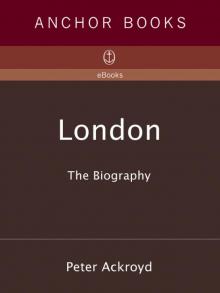 London
London Queer City
Queer City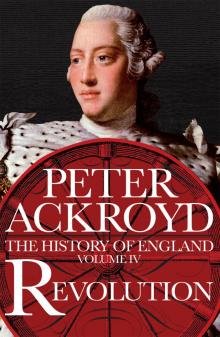 Revolution, a History of England, Volume 4
Revolution, a History of England, Volume 4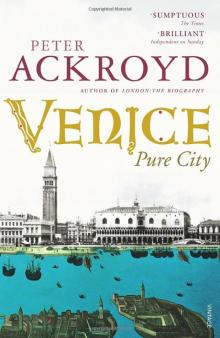 Venice: Pure City
Venice: Pure City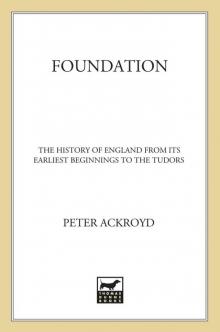 Foundation
Foundation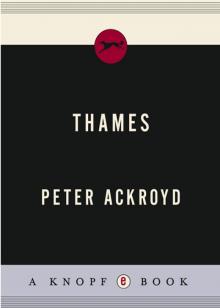 Thames
Thames The Plato Papers
The Plato Papers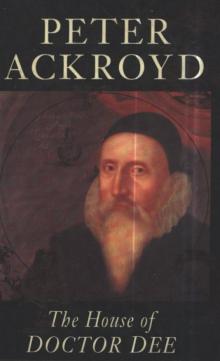 The house of Doctor Dee
The house of Doctor Dee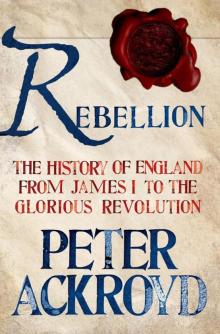 Rebellion: The History of England from James I to the Glorious Revolution
Rebellion: The History of England from James I to the Glorious Revolution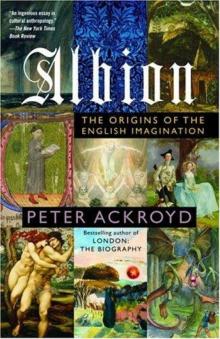 Albion: The Origins of the English Imagination
Albion: The Origins of the English Imagination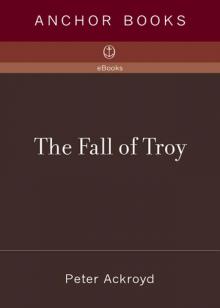 The Fall of Troy
The Fall of Troy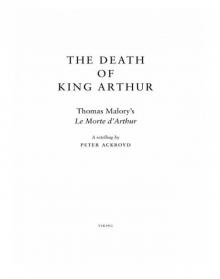 The Death of King Arthur
The Death of King Arthur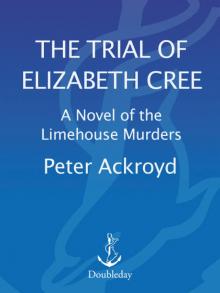 The Trial of Elizabeth Cree
The Trial of Elizabeth Cree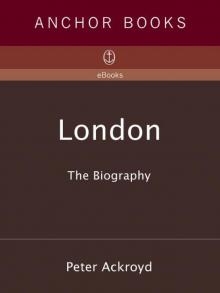 London: The Biography
London: The Biography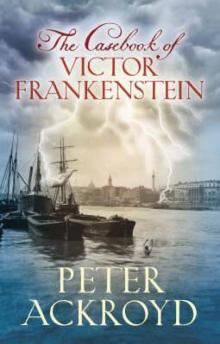 The Casebook of Victor Frankenstein
The Casebook of Victor Frankenstein Hawksmoor
Hawksmoor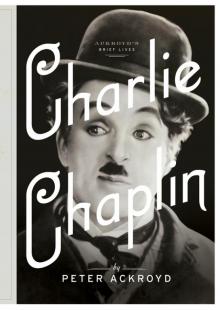 Charlie Chaplin
Charlie Chaplin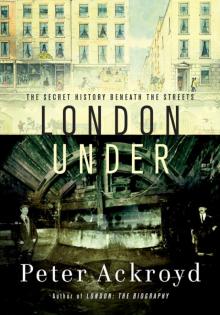 London Under
London Under